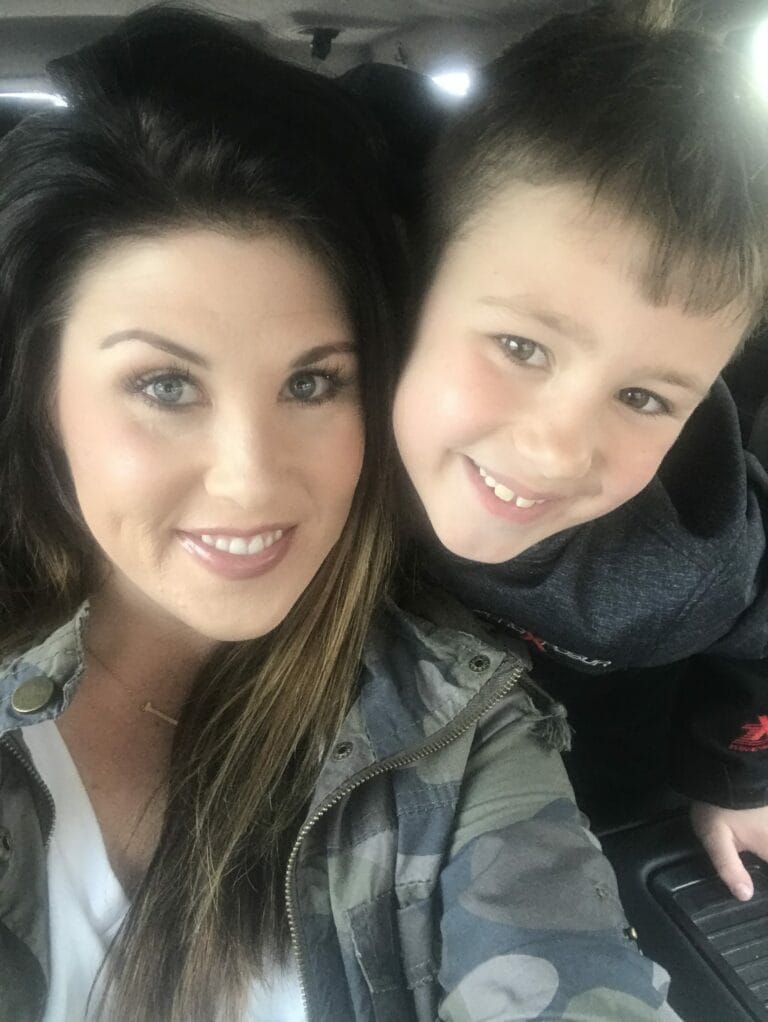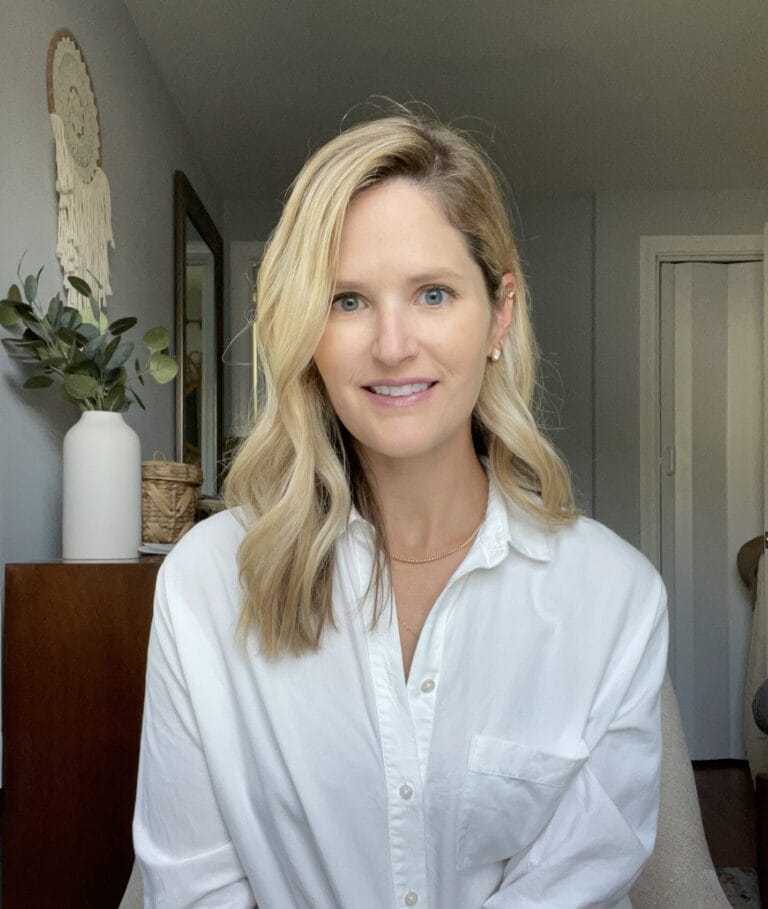
Jenna Malander lives in rural Nebraska with her husband and three children, ages 7, 6, and 4. She’s been working as an Occupational Therapist since 2009. The population of Jenna’s town is 117. You read that right. She told us that school-based jobs in her area are hard to come by and, if you have an OT position, it tends to involve a lot of driving because the area is so rural. The lack of job opportunities and the search for more flexibility as a working mom led her to teletherapy. Jenna is a Lead Clinician at PresenceLearning.
We asked Jenna to tell us a little about her experience in her new role at PresenceLearning.
The Clinical Account Manager role is critical to the success of PresenceLearning and I feel so blessed and honored to be a part of this elite group. Not only do I get to work hand in hand with our providers to ensure they are supported in their journey, but I also get to oversee the clinical quality component of our services. This includes meetings with our Special Education directors to ensure that services are going smoothly; but I also have numerous interactions with the providers at those sites to answer any clinical questions and engage in critical problem solving.
Another part of my role is to assist our Sales Team with demonstrations of the platform for those customers who may be deciding on whether or not they want to include teletherapy services in their District. It has been very rewarding to network with those Districts and show them how the platform can be used to leverage their onsite clinicians to provide high level, quality therapy services, especially this year as students are quickly transitioning back and forth from remote learning.
It has been very rewarding to watch PresenceLearning grow and adapt to the always evolving educational system we find ourselves in. I am proud to be a part of this team and know that every day I get to make a difference in the lives of our clinicians and our school partners.
Jenna Malander lives in rural Nebraska with her husband and three children, ages 7, 6, and 4. She’s been working as an Occupational Therapist since 2009. The population of Jenna’s town is 117. You read that right. She told us that school-based jobs in her area are hard to come by and, if you have an OT position, it tends to involve a lot of driving because the area is so rural. The lack of job opportunities and the search for more flexibility as a working mom led her to teletherapy. Jenna is a Lead Clinician at PresenceLearning.
Could you walk us through your daily routine? A “day in the life of a PL therapist” if you will?
My workday typically starts after I get my own kids off to school each day. I begin by working through my emails. As a Lead Clinician, each email often has a task attached to it, so this takes varying amounts of time each day. I look at my schedule, then prepare lesson plans and my virtual classroom. A normal day for me is anywhere between 10 to 15 students. When I am done seeing my students, I finish up any scheduling, phone calls to teachers or parents, and work on session documentation. I often have evaluations and IEP paperwork that needs to be completed for future meetings, etc. I like to work on these pieces early in the morning before my kids wake up and life gets hectic!
What made you want to be a teletherapist with PL?
My heart is in pediatric OT and, living in a rural setting, my options for that kind of work are extremely limited. Before I had children, I drove close to an hour one direction to work with kids in an amazing outpatient clinic. While I loved it, I knew that once I had children of my own, that drive was not going to work as my family was, and continues to be, my first priority. So, I took a position in a local skilled nursing facility. I did not find that fulfilling, so I began looking into other options. I knew I wanted to be working with kids again. Because of my location, the closest outpatient clinics are a drive and school therapist jobs are very hard to come by. I stumbled across teletherapy and began to do my research. I found PresenceLearning to be one of the leaders in this new and exciting field. I was motivated to be a part of “cutting edge” technology and felt well prepared to do that through my Doctorate level education. I could tell from my first few interactions with PL staff that this company was very different from the others. I took a chance and haven’t looked back since! It is amazing and humbling to think that a small town girl, living outside of a community of less than 120, is now working across four time zones and helping students literally all over the US!
What age groups do you serve?
My caseload is large, and I see students in preschool all the way through high school. The majority of my students are in early elementary; where we are working mainly on fine motor strengthening, writing fundamentals, and age-appropriate fine motor skills. My pre-schoolers work a lot on age-appropriate play and basic fine motor/pre-writing skills. My high school students work on a wide variety of skills; lots of keyboarding and executive functioning. Each day is new and exciting. We build relationships and have great rapport. I think that is so important!
What do you enjoy about being a provider with PL?
So many things, where do I start? First and foremost, I love being able to schedule my work around my family’s busy lifestyle. I have three kids and as they get older, their schedules and extra-curricular activities require a lot of my time! I often work early in the morning before they wake up, or finish up my paperwork in the evenings when they are in bed. Being a tele-practitioner allows me to be the mom I want to be while allowing me the opportunity to use the education and training I worked hard for. It gives me a good work/home/mom/wife/clinician balance. I also love the incredibly supportive clinicians and staff I work with at PL. I truly do feel valued and like I am a vital part of what makes PL successful.
What were you most surprised about when you made the transition to be a teletherapist?
I am still in awe of how connected I feel, even though I work from my own home office. I am in constant communication throughout my day whether it is with students in my virtual therapy room or with parents/teachers on the phone or in a meeting. I also communicate frequently with other clinicians and PL team members. We are miles apart but it is amazing how efficient and cohesive we are. As an OT, I was very hesitant about how I was going to be able to provide quality services via a virtual environment. It has been amazing to watch my students progress as quickly as they do. They are motivated to come to therapy and enjoy using the computer, as students are learning with technology more and more every day!
What was it like to go from pediatric OT to pediatric OT using teletherapy?
Surprisingly, the transition was smooth as a lot of the activities are the same.There’s a misconception about teletherapy. People ask me, “How do you work on scissor skills or pencil grasp using a virtual platform?” You don’t. You work on it the same way you would do it in a traditional setting and that’s what your PSP (primary support person) is there for. You do have to be more up front with your PSP at the school, with a lot more communication right off the bat to know what they have available to use as tools because the more tools they have the more fun and interactive your therapy sessions can be. Most of my PSPs will have a list or a bucket of OT materials that we use very frequently so all of those items are readily available. If there are activities off of the platform I want to use, I will send them to my school PSP the day before so they are printed off and ready for our session.
There are so many things that we use for OT that aren’t directly on the platform. For example, we use Play-Doh or resistive manipulatives to work on fine motor strengthening and stringing beads to address bilateral coordination. We color, use dot-to-dots, and craft activities to develop scissor and age-appropriate sequencing and visual motor skills. A lot of times we’re up out of our seats doing upper body or core strengthening and motor coordination activities. You do things the same way you would do normally. OT is very interactive and I think that’s why the kids respond so well to it. They get to move around a lot AND use technology.
As an OT, I use two cameras for all of my therapy sessions. The external camera is pivotal for OT. My built in camera stays on my face the whole time. The external camera points down at my desk so I can model and demonstrate what I want the student to do. With my older students, the external camera is super helpful in working on their keyboarding skills.
PL has an amazing library of resources available to clinicians. I can load any activity into my interactive classroom and continue to work on students areas of need.
What do you find most challenging about being a teletherapist?
In my experience so far, scheduling has been one of the most challenging parts of telepractice. I am working across all four time zones this year so I am juggling a little more than usual. I must be organized and efficient in order to get all of my students seen. The teachers, parents, and school staff I work with are so helpful and supportive; great communication is definitely key! Treatment wise, the most challenging is the sensory consult. When I am physically on site at a school, I can walk into a classroom, stand in back and usually the students don’t even know I’m watching. When a student knows they’re on camera, they’ll act differently so it’s challenging to view them in their normal environment. When the PSP walks into the classroom carrying the laptop with me on camera, as soon as the student realizes it’s me, they change their behavior. So that’s a challenge. I’ve learned to rely more on input from the teachers. Having a virtual therapist can be a big shift for them too—instead of the OT just walking in or catching them in the hallway they need to be more cognizant of our other communication methods.
What advice would you give a provider who is considering making a transition to telepractice?
Do your research to determine which telehealth company will be the best fit for you. Because PL doesn’t have a non-compete clause, I have hours with another telehealth company too. The difference between the two online platforms is like night and day. Talk to other clinicians who are actually doing teletherapy, as they will be a great resource and sounding board. There are also starting to be quite a few evidence based articles about telehealth in our professional journals that outline and show the effectiveness. If it’s something you really want to do, just go for it! For a lot of clinicians, virtual therapy is a very scary realm until you actually get in and make that shift. When I started, I found the “How Does It Work” video on the PL website to be very helpful.
Is there anything else you’d like to share with us about your journey to teletherapy?
My experience, so far, has been very rewarding as the outcomes that I am seeing with kids are phenomenal. They respond so well to the technology; it’s something they like to do and they’re motivated by it. I am grateful for the many connections I have made across the US. I have made lifelong connections with some wonderful teachers, students, and clinicians.




